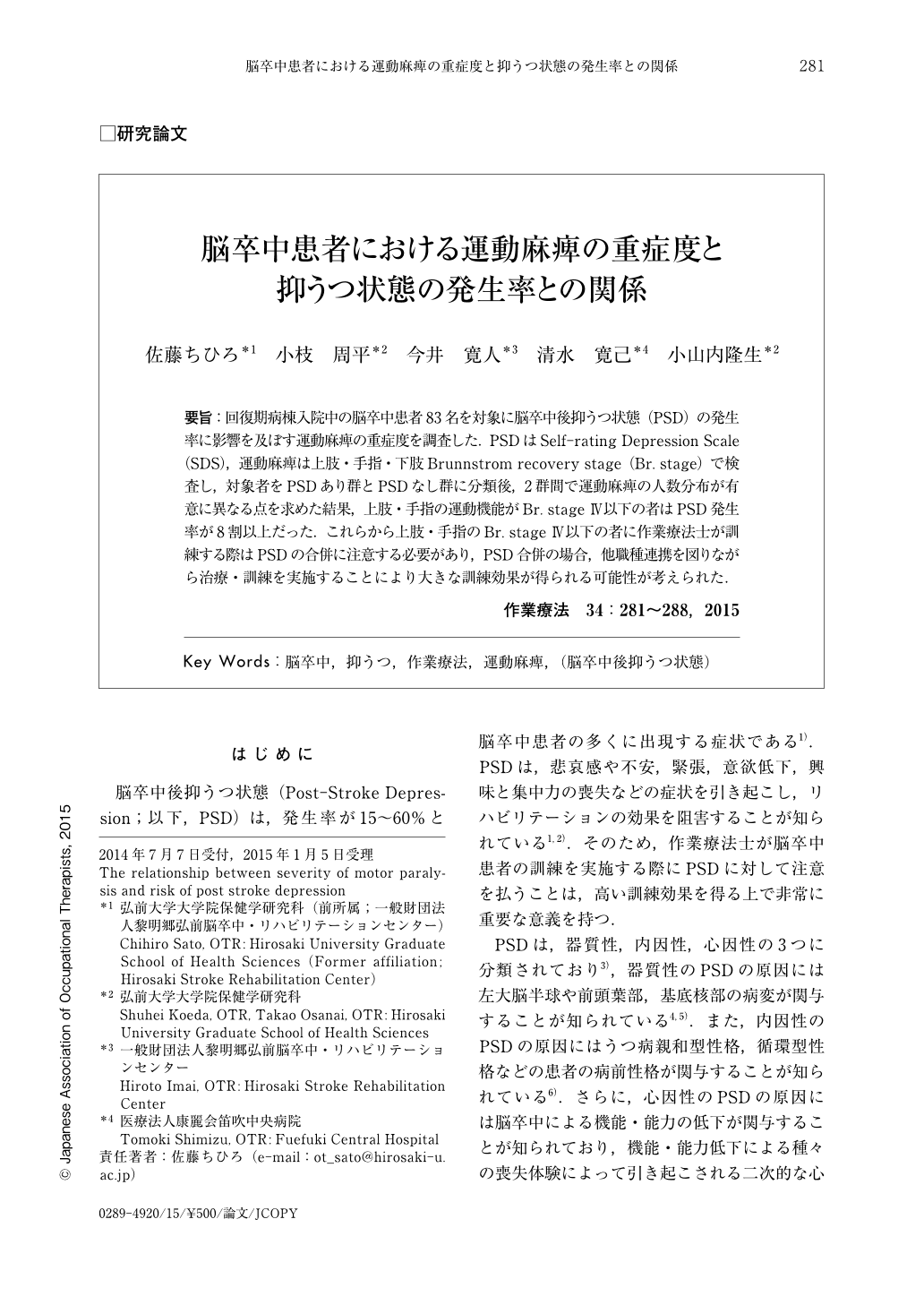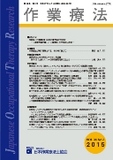Japanese
English
- 販売していません
- Abstract 文献概要
- 1ページ目 Look Inside
- 参考文献 Reference
- サイト内被引用 Cited by
要旨:回復期病棟入院中の脳卒中患者83名を対象に脳卒中後抑うつ状態(PSD)の発生率に影響を及ぼす運動麻痺の重症度を調査した.PSDはSelf-rating Depression Scale(SDS),運動麻痺は上肢・手指・下肢Brunnstrom recovery stage(Br. stage)で検査し,対象者をPSDあり群とPSDなし群に分類後,2群間で運動麻痺の人数分布が有意に異なる点を求めた結果,上肢・手指の運動機能がBr. stage Ⅳ以下の者はPSD発生率が8割以上だった.これらから上肢・手指のBr. stage Ⅳ以下の者に作業療法士が訓練する際はPSDの合併に注意する必要があり,PSD合併の場合,他職種連携を図りながら治療・訓練を実施することにより大きな訓練効果が得られる可能性が考えられた.
The purpose of this study is to investigate the relationship between the severity of motor paralysis and Post Stroke Depression (PSD). The subjects were 83 stroke patients hospitalized in convalescent wards. PSD was measured by Self-rating Depression Scale (SDS) and motor paralysis was measured by Brunnstrom recovery stage (Br.stage) of upper extremities, fingers and lower extremities. The subjects were divided into four groups : PSD (+) with severe motor paralysis;PSD (+) with mild motor paralysis;PSD (-) with severe motor paralysis;and PSD (-) with mild motor paralysis. The cutoff point of severe and mild motor paralysis of upper extremities and fingers was Ⅳ (Br.stage). The PSD incidence in Br. stage Ⅴ or more was about 40% whereas the PSD incidence of Br.stageⅣ or less was more than 80%. The results suggest that the PSD develops easily in patients with Br.stage Ⅳ or less of upper extremities and fingers. The occupational therapist must pay attention to the PSD of these patients when giving effective exercise.

Copyright © 2015, Japanese Association of Occupational Therapists. All rights reserved.


